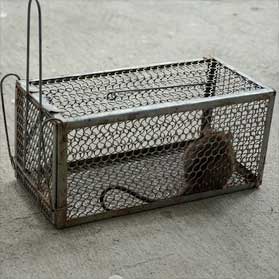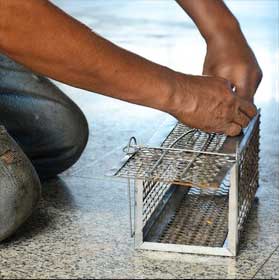Opossum Removal & Trapping Possum Sarasota Bradenton
Opossum
Food And Feeding Habitats
- Opossums lived during the time of the dinosaurs and one reason for their continued survival is their ability to eat nearly anything.
- Foods include fruits, nuts, grains, insects, slugs, snakes, frogs, birds, bird eggs, shellfish, mice, and carrion (dead animals).
- Around human habitation, opossums also eat garbage, pet food, birdseed, poultry, and handouts.
- Because opossums eat many road-killed animals, including other opossums, they often become road kill themselves.
- Because opossums accumulate little body fat for winter and don't store food, they must forage year-round.
Den Sites
- Opossums will den nearly anywhere that is dry, sheltered, and safe. Den sites include burrows dug by other mammals, rock crevices, hollow stumps, logs and trees, woodpiles, and spaces in or under buildings.
- Their fur doesn't provide much insulation, so opossums fill their dens with dried leaves, grass, and other available soft material to form well-insulated nests. Nest materials are carried in their coiled tail.
- To avoid predators, opossums move to a different den every few days. (A male opossum followed by radio tracking used 19 different dens in five months.)
- A female with young or an opossum "holed up" during a cold spell will use the same den for a greater length of time.
Reproduction
- Opossums are successful as a species due in part to the size and frequency of litters.
- The breeding season begins as early as January and may continue to mid-November.
- Being marsupials, opossums give birth to undeveloped young. Only 12 days following breeding, five to ten bumblebee-sized pups crawl into their mother's pouch, where each firmly attaches to a teat.
- Opossum pups find nourishment, warmth, and safety in the pouch. When closed, it is so well sealed that if the female swims, the pups remain dry.
- At 60 to 70 days old, the house mouse-size young begin to leave the pouch for brief periods, returning to suckle.
- At 80 to 90 days old, the young begin to ride on their mother's back with their feet and tail firmly attached to her fur. (Contrary to myth, a female opossum never carries her young on her tail.)
- At 3½ months of age, the young begin to leave the den to feed on their own, and soon disperse to establish their own territories.
Viewing Opossums
- Opossums are nocturnal, spending the day in dens or other protected spots. However, they can be seen at any time of day, especially in winter when food is scarce. At night, opossums forage in areas near their current dens, but can travel up to 2 miles in search of food.
- Opossums are solitary animals, and except during breeding season or a female with her young, they are rarely seen together. Opossums do not hibernate.
- Although they can climb and are good swimmers, opossums prefer to amble about on the ground. With a top speed of about 4 miles per hour, when "running," opossums appear to be walking quickly, with the tail rotating in circles for balance. When idle, opossums constantly groom themselves, much as house cats do.
- A nighttime walk along a path bordering a stream or wetland, or down an alley lined with trashcans, will occasionally turn up an opossum searching for food. Strong but not agile climbers, opossums can be observed climbing trees to escape, search for food, rest, or to look for dens. Their tails are able to wrap around and grasp tree limbs and can support the animal's full weight for short periods. (Contrary to myth, opossums do not hang upside down by their tails when sleeping.)
Health Risk
Opossum Diseases: Opossums have a spectacular immune system, and a lower than average body temperature. This means that they don't carry a whole lot of the standard zoonotic diseases that other animals might carry. Although an opossum might get rabies, it's very unlikely. However, opossums do often carry fleas and other parasites, and the potential diseases that go along with those. They also defecate, a lot, and when they get in your attic the droppings can contaminate the area and pose the usual excrement health risks, such as leptospirosis or Salmonella.




